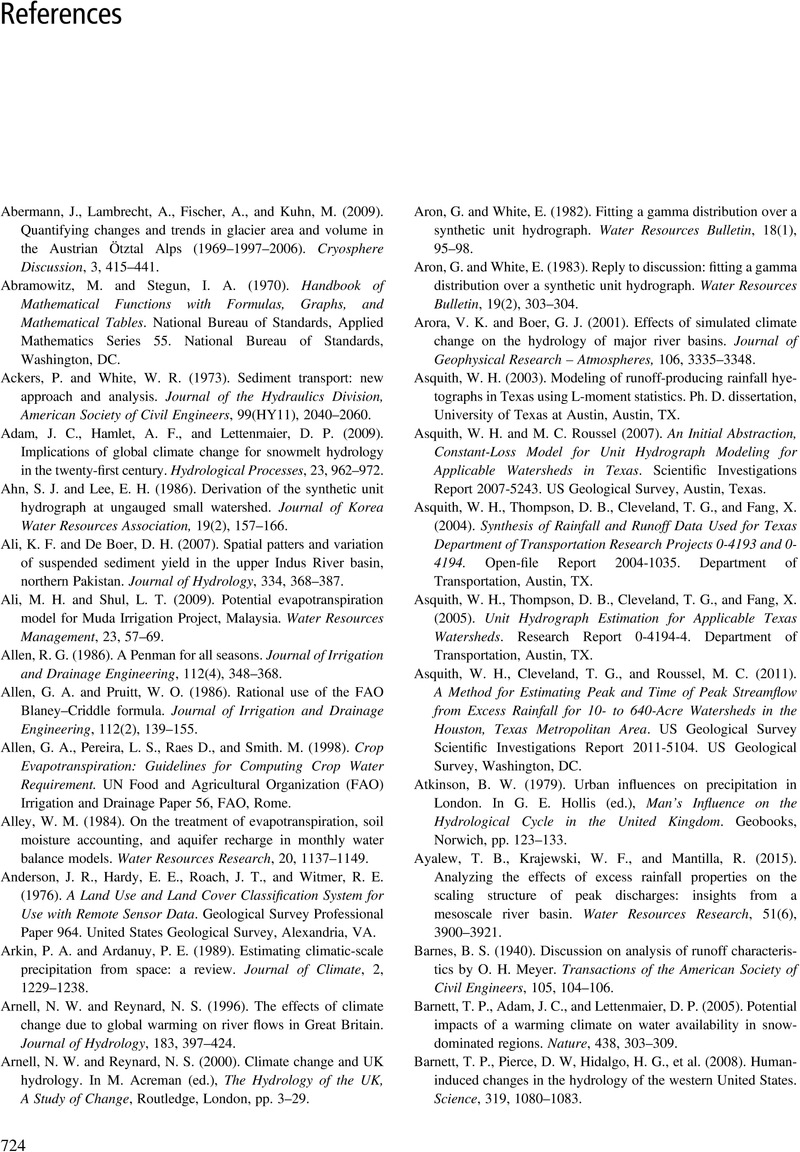Book contents
- Frontmatter
- Dedication
- Contents
- Preface
- Acknowledgments
- Common Abbreviations
- 1 Applied Hydrology in the Twenty-First Century
- 2 Review of Mathematics
- 3 Statistical Hydrology
- 4 Rainfall Measurements and Models
- 5 Streamflow Measurements and Statistics
- 6 Geomorphologic Concepts and Watershed Characteristics
- 7 Abstractions and Effective Rainfall
- 8 Groundwater and Baseflow
- 9 Unit Hydrograph Models
- 10 Kinematic Wave Model of Overland Flow
- 11 The Rational Method
- 12 Channel Routing
- 13 Reservoir Routing
- 14 Evaporation and Evapotranspiration
- 15 Snowmelt
- 16 Erosion and Sedimentation
- 17 Reservoir Operations
- 18 Climate Change
- 19 Water Resources Management
- 20 Geographic Information Systems
- 21 Hydrologic Modeling
- References
- Index
- Plate section
- References
References
Published online by Cambridge University Press: 09 July 2024
- Frontmatter
- Dedication
- Contents
- Preface
- Acknowledgments
- Common Abbreviations
- 1 Applied Hydrology in the Twenty-First Century
- 2 Review of Mathematics
- 3 Statistical Hydrology
- 4 Rainfall Measurements and Models
- 5 Streamflow Measurements and Statistics
- 6 Geomorphologic Concepts and Watershed Characteristics
- 7 Abstractions and Effective Rainfall
- 8 Groundwater and Baseflow
- 9 Unit Hydrograph Models
- 10 Kinematic Wave Model of Overland Flow
- 11 The Rational Method
- 12 Channel Routing
- 13 Reservoir Routing
- 14 Evaporation and Evapotranspiration
- 15 Snowmelt
- 16 Erosion and Sedimentation
- 17 Reservoir Operations
- 18 Climate Change
- 19 Water Resources Management
- 20 Geographic Information Systems
- 21 Hydrologic Modeling
- References
- Index
- Plate section
- References
Summary

- Type
- Chapter
- Information
- Applied Hydrology , pp. 724 - 740Publisher: Cambridge University PressPrint publication year: 2024

